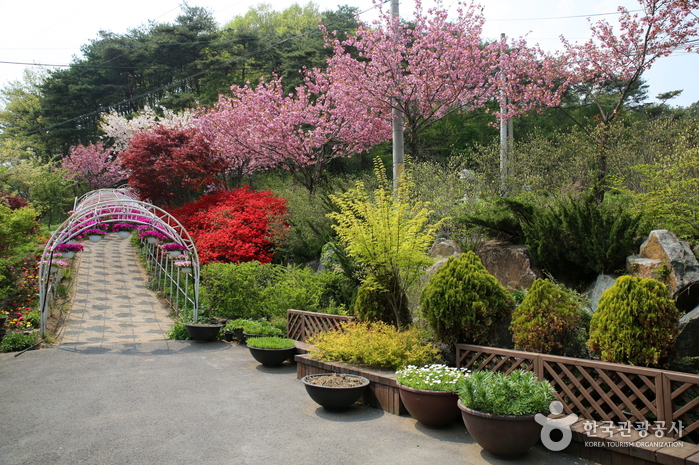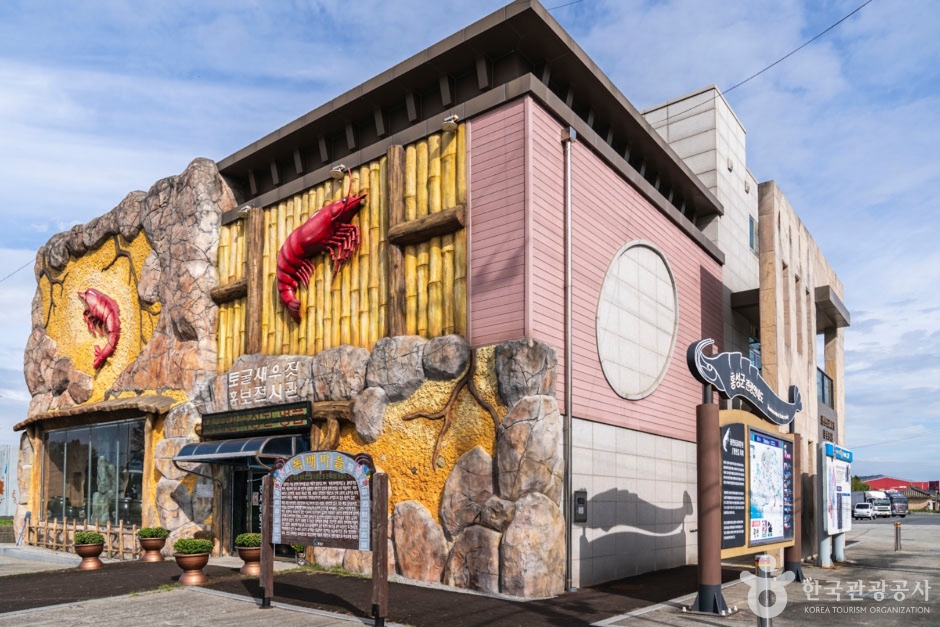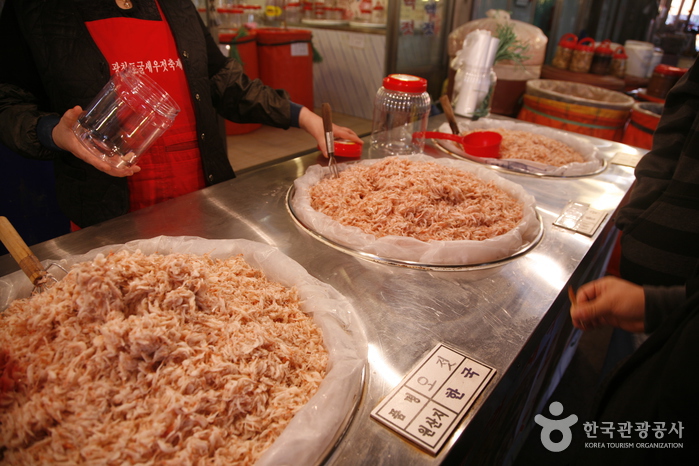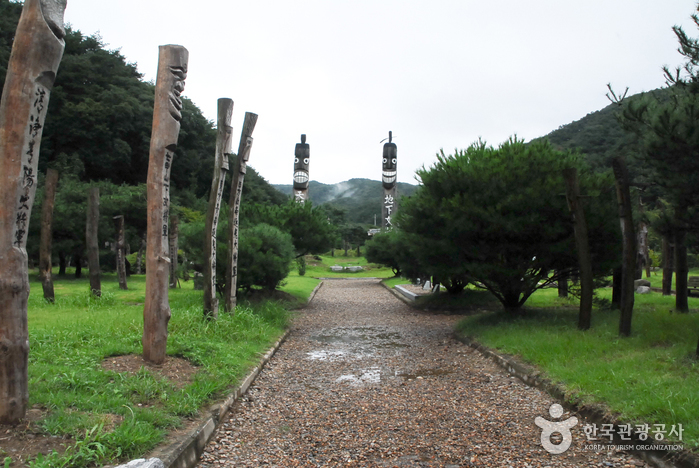Kohwun Garden (고운식물원)
15.3 Km 26819 2020-08-28
398-23, Singmurwon-gil, Cheongyang-gun, Chungcheongnam-do
+82-41-943-6245
Kohwun Garden opened on April 28, 2003, following the collection, planting, and cultivation of a wide range of plants and trees over a twelve-year period. The garden is about 200,000 ㎡, and the half of the area is used for educational purposes for both professionals and non-professionals alike. It is home to at least 15 rare or endangered plant species including Miseonnamu (Abeliophyllum distichum Nakai) and Euryale ferox Salisbury, in addition to nearly 4,500 species of plant genetic resources.
Hongseong Jeongamsa Temple (정암사 (홍성))
16.1 Km 8355 2021-03-12
652, Oseo-gil, Hongseong-gun, Chungcheongnam-do
+82-41-641-0488
Jeongamsa Temple is a small rural temple situated halfway up Oseosan Mountain. There are few existing records that mention the temple’s beginning. Some suggest that it was built around AD 527 during the 5th year of Baekje King Seongwang’s reign, but there is little evidence to support this theory. The only reference alluding to a specific time is Yeojidoseo ("Detailed Survey of Korean Geography" published during the late Joseon dynasty). It states Jeongamsa Temple's location as on Oseosan Mountain, and Oseosan Mountain being surrounded by Hongsan Mountain and Baegwolsan Mountain and intersected by Hongju, Gyeolseong, and Boryeong. This indicates the temple was recognized in the mid-18th century and around the same time, Garamgo (a book about temples, published in the late 18th century) also states that Jeongamsa Temple is located approximately 11 kilometers to the east of Gyeolseonghyeon. It is still uncertain whether the temple referred to is Jeongamsa Temple on Oseosan Mountain.
Some foundation stones within the temple site measure 70-80 centimeters on each side. These stones indicate that the old Buddhist shrine of Jeongamsa Temple was laid out with five kan (Korean unit of measurement indicating the space between two pilars) at the front and three kan on the side. Future archaeological studies will help identify the true history of Jeongamsa Temple.
Chungcheong Suyeongseong Fortress in Boryeong (보령 충청수영성)
17.1 Km 28813 2024-02-21
Chungcheongsuyeong-ro, Ocheon-myeon, Boryeong-si, Chungcheongnam-do
Chungcheong Suyeongseong Fortress in Boryeong is a stone fortress built by the Joseon dynasty (1392-1897) in the 16th century to defend against invasions through the Hwanghae Sea. It offers a picturesque view of the Hwanghae Sea and several islands. The entrance to the fortress, called Manghwamun Gate, showcases stone artistry with its polished granite arch. This site also has historical significance as a place where Catholic persecution occurred in the 19th century.
Ocheon Port (오천항)
17.2 Km 39628 2024-02-21
Soseong-ri, Ocheon-myeon, Boryeong-si, Chungcheongnam-do
Ocheon Port is located in the northern part of Boryeong-si, where the Hwanghae Sea and Gwangcheoncheon Stream meet. It was once an important regional administrative center during the Joseon dynasty (1392-1897). Today, the port still retains its function, and visitors can explore and purchase various seafood caught in the Hwanghae Sea at the market. Ocheon Port Ferry Terminal operates ferry services to nearby islands such as Woldo Island and Yukdo Island.
Gwangcheon Cave Salted Shrimp Complex (광천토굴새우젓단지)
18.0 Km 4623 2024-02-26
119, Gwangcheon-ro, Gwangcheon-eup, Hongseong-gun, Chungcheongnam-do
Gwangcheon Cave Salted Shrimp Complex is a collection of shops offering saeujeot (salted shrimp), a specialty of Gwangcheon. Gwangcheon’s proximity to the Yellow Sea makes it a famous place for jeotgal (salted seafood), particularly those made with shrimp. Gwangcheon’s saeujeot (salted shrimp) is stored and aged in a former mine cave tunnel, so it has great quality. There is even an exhibition hall dedicated to Gwangcheon cave salted shrimp. The Gwangcheon Cave Salted Shrimp & Dried Laver Festival is held in October.
Baekje Cultural Museum (백제문화체험박물관)
19.3 Km 821 2024-02-23
43-24 Janggok-gil, Daechi-myeon, Cheongyang-gun, Chungcheongnam-do
Designed to mimic the traditional kilns of the Baekje period, the Baekje Cultural Museum is a unique space that blends historical elegance with immersive exhibits. It showcases five key masterpieces: the historic Baekje kiln site that’s over 1,500 years old, exquisite blue tiles, an evocative painting of Choi Ik-hyeon's exile, an intricate rubbing of the Confucius statue, and a resplendent golden turtle. Additionally, the museum offers a variety of interactive centers like a gold mine exploration area, an agricultural culture center, an exhibition hall that transports viewers back to the 1960s. There are also Han Sang-don Memorial Hall, Yoo Sang-ok Donation Room, and Jeongseung Park. On weekends, the museum becomes even more lively, offering hands-on activities such as pottery and cup making, as well as the chance to dress in traditional Baekje attire.
Gwangcheon Cave Salted Shrimp Market (광천 토굴새우젓시장)
19.6 Km 23896 2024-02-26
8-20, Gwangcheon-ro 285beon-gil, Gwangcheon-eup, Hongseong-gun, Chungcheongnam-do
Gwangcheon Cave Salted Shrimp Market is a traditional market located in Gwangcheon, between Hongseong and Boryeong. Gwangcheon’s proximity to the Yellow Sea makes it a famous place for jeotgal (salted seafood), made using seafood and shrimp caught from the Yellow Sea, and laver seaweed. Gwangcheon’s saeujeot (salted shrimp) is stored and aged in a cave tunnel, so it has great quality. The market also offers agricultural goods, seafood, clothing, and sundry items.
Chilgapsan Jangseung Park (칠갑산 장승공원)
19.9 Km 11416 2021-08-18
Janggok-ri, Cheongyang-gun, Chungcheongnam-do
+82-41-940-2194
Jangseung Park on Chilgapsan Mountain is the largest preservation area for "jangseungs," the ancient wooden or stone totem poles that were usually placed at the village entrance to ward off evil spirits. It was established in May 1999 to counter the dwindling awareness of the artifacts, and houses some of Korea's tallest jangseungs (11.5 m) as well as replicas of indigenous totem poles from across the world. Today, it continues to host the Annual Chilgapsan Mountain Jangseung Festival, and serves as an important site of Korean history learning.





 English
English
 한국어
한국어 日本語
日本語 中文(简体)
中文(简体) Deutsch
Deutsch Français
Français Español
Español Русский
Русский